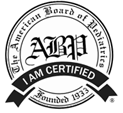Spring & Summer = LICE season
- Transmission modes: 95-98% of lice is spread through head-to-head contact (hugging, group selfies, whispering); the rest is through sharing of hats, hair brushes, pillows and such.
- Lice can’t jump. They have no knees or hind legs. They can move very fast though strands of hair.
- Some kids can get this from other classmates at school or summer camp friends.
- They are attracted to the scent of blood supply of scalps/heads in close proximity.
- They can only survive away from their food source (human heads) for 1-2 days in the environment, but for about a month on the head.
- Nits (lice eggs) are attached to strands of hair close to the scalp, as they need proximity to the scalp for heat to develop. Nits on unattached hair strands have only minimal chances of hatching or surviving.
- Nits are very difficult to remove from hair, as they are attached with a glue-like substance. The nit casing (shell) remains on the hair even after they have hatched and grown.
- Regular cleaning is sufficient for the environment through vacuuming, placing stuffed animals, coats, jackets, pillows in a dryer on high heat; placing soft items that can’t be dried in plastic bags for 2 days, etc. Use of insecticide sprays is not recommended.
- PREVENTION: Head checks using a high quality lice/nit comb; Limit head-to-head contact especially when there are known active cases around; and tying or securing long hair into buns (regular or messy) or braids (anything that secures hair from flowing or blowing or easily touching other heads easily) is helpful. Some suggest repelling through used of essential oil sprays on the scalp to mask the scent lice are attracted to…tea tree oil is popular BUT has skin drying effects…Peppermint oil spray is a preferred recommendation from many professionals. My sister uses Fairy Tales Rosemary Repel on her girls hair.
Sarah Caudle, PA-C



